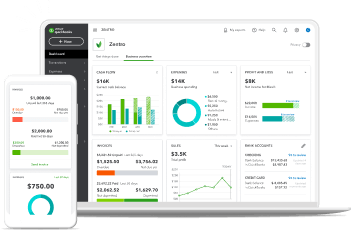How to Install a Machine Credential
Before diving into the machine credential creation process, you need to download and install a browser extension that's compatible with your device's operating system. These browser extensions are available for Firefox and Chrome-based web browsers on Windows, MAC OS, and Linux.
Now you’ve done that, let’s explore how you can install a machine credential:
Installing a Machine Credential
Step 1: Open your web browser and go to info.authorisationmanager.gov.au. Then, click the "Login with myGovID" button in the top right-hand corner.
Step 2: Enter the email address you used to set up your myGovID. A 4-digit code will appear in your browser. Open the myGovID app on your device, enter the code, and click "Accept." If you've chosen the "Remember me" option, you'll only need to click "Accept" in your app.
Step 3: Click "View or manage authorisations, machine credentials, and cloud software notifications." This will direct you to a view of all the entities you can act on behalf of. Select the entity that you want to create a machine credential for.
Step 4: The entity homepage will be displayed with a list of all the authorisations for the entity. Click the "Manage Credentials" tab in the toolbar.
Step 5: If you've already installed the required browser extension, proceed to the next step. If not, you'll receive a message indicating that browser extension software is required. Click "Machine credential downloads" or refer to the "Installing a browser extension" section.
Step 6: Select "Create machine credential."
Step 7: Enter the following information:
- Keystore path - The location where the machine credential will be created and stored. The information will be pre-filled but can be changed if needed.
- Keystore password - Choose a password that is at least 10 characters, including an uppercase letter, a lowercase letter, a number, and a special character. This password will be provided within your software during setup or authentication, and it should not be the same as your myGovID password.
- Verify your keystore password - Re-enter your chosen password.
- Credential name - Create a name that helps you quickly identify the machine credential. If you're creating a new machine credential to prevent the expiration of an existing one, use the same credential name.
- Identify the machine credential custodian - This will be pre-filled with your name and cannot be changed.
If you're creating a new machine credential to prevent an existing one from expiring, a message will confirm that the new credential will share the same permissions. You'll need to revoke the existing machine credential if it hasn't expired yet.
You have several options for storing the machine credentials:
- In an existing keystore by using the initial keystore path and password
- In a new keystore, changing the keystore path and password
- In a new keystore, each time you create one – you'll need to change the keystore path each time you make a new machine credential.
The machine credential keystore is generated using Extensible Markup Language (XML). If your software requires the keystore in an alternative format, follow your provider's guidance to convert and install it.
Tick the box to confirm that you understand and accept the machine credential details, and click "Download."
Step 8: After downloading, you'll receive a message confirming that the machine credential has been successfully installed.
Step 9: On the "Manage credentials" page, you can create, edit, revoke, and claim unassigned machine credentials for your entity of choice.

















